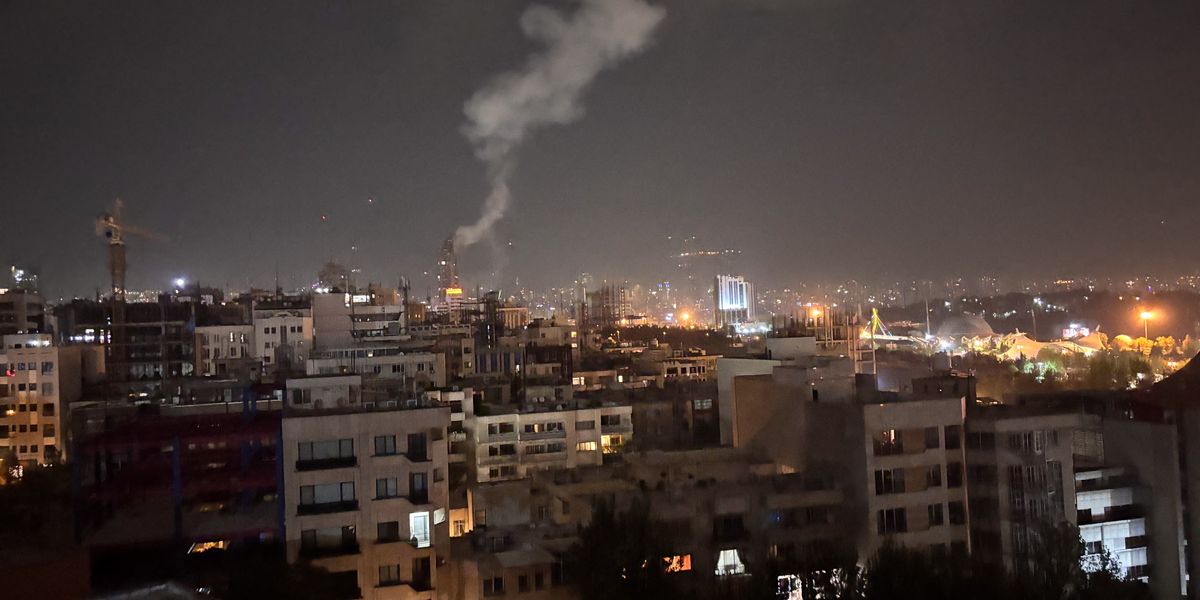
Europe is a big continent with hundreds if not thousands of languages. (Image: Getty)
Europe is an incredibly diverse continent, stretching from the shores of the Faroe Islands and Iceland to countries like Azerbaijan, which lies partly in Europe and partly in Asia. As a result, the entire region is home to hundreds, if not thousands, of unique languages.
But many of these languages are at risk. According to UNESCO, 52 languages across Europe are now classed as "severely endangered," meaning they are only spoken by older generations and are in danger of disappearing entirely. One of the most threatened is Budukh, spoken by just 200 people in a village in northeastern Azerbaijan.

One of the most threatened is Budukh, spoken by just 200 people in Azerbaijan. (Image: Getty)
The language has no written form, and many speakers now use Azerbaijani or Russian in daily life, putting Budukh at even greater risk.
The list includes languages from almost every corner of the continent.
In the UK, Guernésiais and Jèrriais, the traditional languages of Guernsey and Jersey, are both fading fast.
In France, languages like Breton, Picard, and Provençal are all under threat as younger people switch to French.

In the UK, Guernésiais and Jèrriais are both fading fast. (Image: Getty)
Invalid email
We use your sign-up to provide content in ways you've consented to and to improve our understanding of you. This may include adverts from us and 3rd parties based on our understanding. You can unsubscribe at any time. Read our Privacy Policy
In Scandinavia, several forms of the Sámi language are on the brink. Southern Sámi, spoken in parts of Norway and Sweden, has around 600 speakers. Skolt Sámi, found in Finland, has about 300.
Both are protected through local education and cultural programmes, but the number of speakers is still falling.
Other examples include Wymysorys, spoken by fewer than 20 people in Poland, and Karaim in Lithuania, which has only around 80 speakers. Both are now considered critically endangered.
UNESCO and other organisations are working to save many of these languages. Some are being recorded, added to apps, or taught in schools, while others are being kept alive through festivals, songs, and storytelling. But experts warn that time is running out.

In Scandinavia, several forms of the Sámi language are on the brink. (Image: Getty)
Languages often die out when younger generations stop learning them.
In many cases, people switch to the dominant national language, like Russian, French, or English, for work, education, or everyday life.
Over time, fewer children speak the older language at home, and eventually, it vanishes.

Wymysorys, a rare language in Poland, is spoken by fewer than 20 people. (Image: Getty)
Full list of Europe’s 52 severely endangered languages
- Wymysorys (Poland) – Fewer than 20 speakers
- Guernésiais (Guernsey) – Approximately 200 speakers
- Budukh (Azerbaijan) – Approximately 200 speakers
- Skolt Sámi (Finland, Russia) – Approximately 300 speakers
- Southern Sámi (Norway, Sweden) – Approximately 500 speakers
- Jèrriais (Jersey) – Approximately 1,900 speakers
- Karaim (Lithuania) – Approximately 80 speakers
- Khinalug (Azerbaijan) – Approximately 1,500 speakers
- Udi (Azerbaijan, Georgia) – Approximately 3,700 speakers
- Tat (Azerbaijan) – Approximately 15,000 speakers
- Crimean Turkish (Ukraine) – Approximately 30,000 speakers
- Cornish (United Kingdom) – Approximately 3,000 speakers
- Manx (Isle of Man) – Approximately 1,800 speakers
- Breton (France) – Approximately 200,000 speakers
- Picard (France, Belgium) – Approximately 700,000 speakers
- Provençal (France) – Approximately 200,000 speakers
- Arbanasi (Croatia) – Approximately 5,000 speakers
- Arvanitika (Greece) – Approximately 50,000 speakers
- Auvergnat (France) – Approximately 1,000,000 speakers
- Bats (Georgia) – Approximately 3,000 speakers
- Bohtan Neo-Aramaic (Georgia) – Approximately 5,000 speakers
- Burgundian (France) – Approximately 50,000 speakers
- Champenois (France, Belgium) – Approximately 20,000 speakers
- Cimbrian (Italy) – Approximately 2,000 speakers
- Cypriot Arabic (Cyprus) – Approximately 6,000 speakers
- Faetar (Italy) – Approximately 1,400 speakers
- Frainc-Comtou (France, Switzerland) – Approximately 20,000 speakers
- Gallo (France) – Approximately 28,000 speakers
- Gardiol (Italy) – Approximately 1,000 speakers
- Homshetsma (Georgia) – Approximately 1,000 speakers
- Istriot (Croatia) – Approximately 400 speakers
- Istro-Romanian (Croatia) – Approximately 500 speakers
- Judezmo (Judaeo-Spanish) (Various) – Approximately 100,000 speakers
- Kashubian (Poland) – Approximately 100,000 speakers
- Kryts (Azerbaijan) – Approximately 5,000 speakers
- Languedocien (France) – Approximately 1,500,000 speakers
- Limousin (France) – Approximately 500,000 speakers
- Lorrain (France, Belgium) – Approximately 50,000 speakers
- Lule Sámi (Norway, Sweden) – Approximately 650 speakers
- Mariupolitan Greek (Ukraine) – Approximately 20,000 speakers
- Megleno-Romanian (Greece, North Macedonia) – Approximately 5,000 speakers
- Molise Croatian (Italy) – Approximately 1,000 speakers
- Norman (France) – Approximately 30,000 speakers
- North Frisian (Germany) – Approximately 10,000 speakers
- Poitevin-Saintongeais (France) – Approximately 200,000 speakers
- Resian (Italy) – Approximately 1,000 speakers
- Saterland Frisian (Germany) – Approximately 2,000 speakers
- Swabian German (Germany) – Approximately 820,000 speakers
- Swiss German (Switzerland) – Approximately 4,000,000 speakers
- Töitschu (Italy) – Approximately 1,000 speakers
- Transylvanian Saxon (Romania) – Approximately 15,000 speakers
- Turoyo (Turkey, Syria) – Approximately 250,000

 1 month ago
11
1 month ago
11









 English (US) ·
English (US) ·